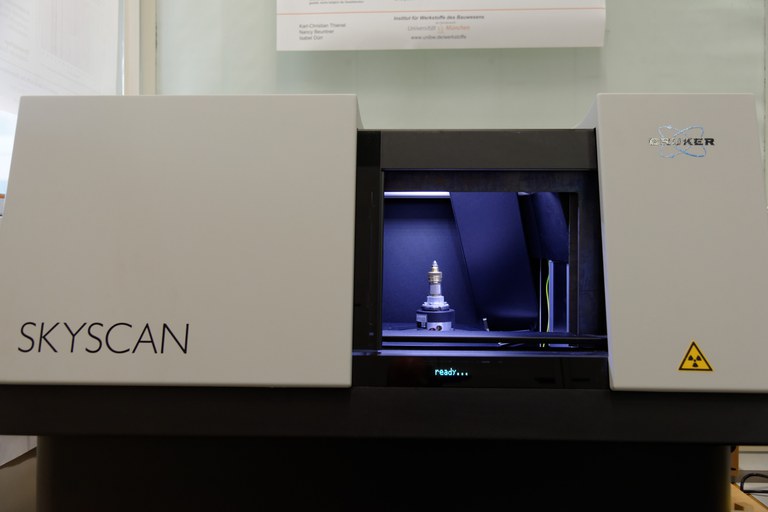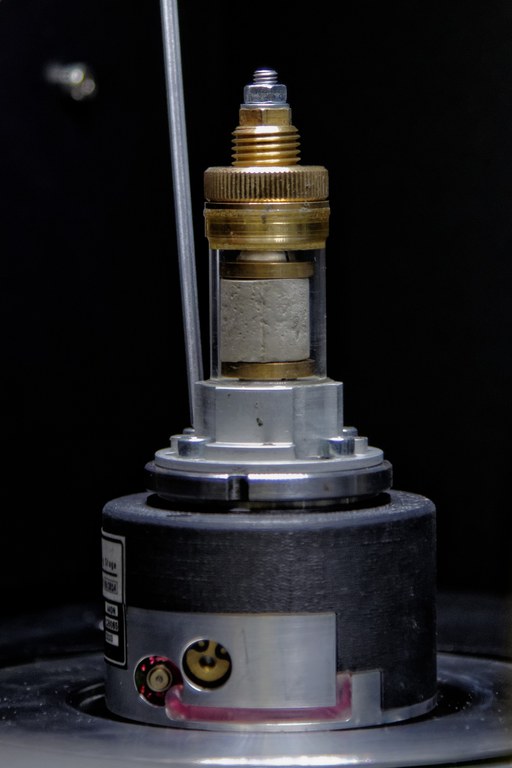Micro-computer tomography (µCT)
Computer tomography is a three-dimensional imaging technique. It can be applied for non-destructive contact-free analysis of the outer contour and the inner structure of a sample specimen. This is accomplished by taking X-ray absorption pictures from different positions by rotating the sample stepwise. The data obtained are transferred by computer-based calculations into a tree-dimensional image of the sample. The technique permits the very detailed tree-dimensional identification of the internal inhomogeneity of a sample with respect to location, type, size, quantity and distribution. Additionally, information become available about materials of deviating densities within the specimen. Pore volume and other parameters can be calculated with special evaluation software in a further step. The reconstructed data permit the visual investigation of specimen’s contour and sectional images in any direction. The maximum number of sectional images depends upon the resolution of the measurement. The µCT yields a three-dimensional resolution of 5 µm for small samples. Specimens can be investigated with a maximum dimensions of 140 mm in diameter, 200 mm in length and a maximum weight of 1.8 kg.

Figure: Bruker SkyScan micro-CT 1173 with sample
Loading stage
The µCT is equipped with a loading stage which enables the observation of crack formation and growth inside a specimen while the actual load is applied. Specimens are loaded in displacement control and the displacement kept constant at predefined stages during the actual scan which ensures distortion free image series.

Figure: Loading stage with concrete sample